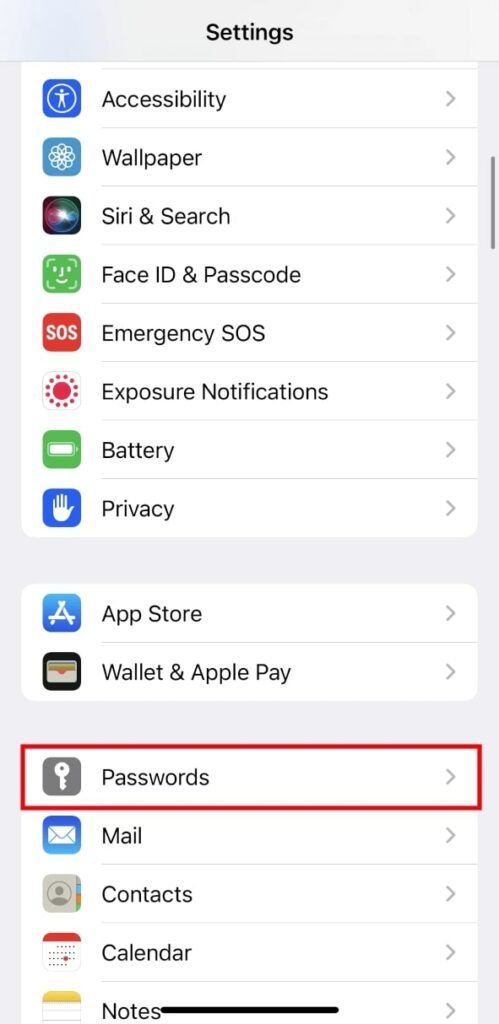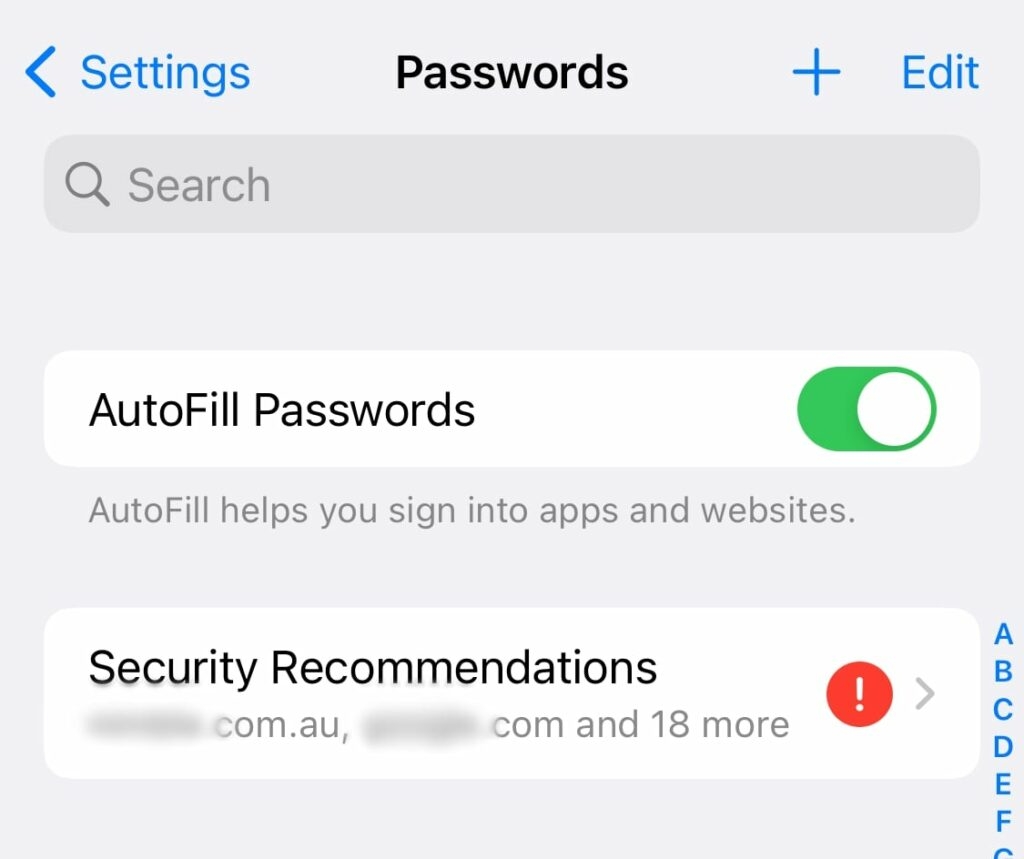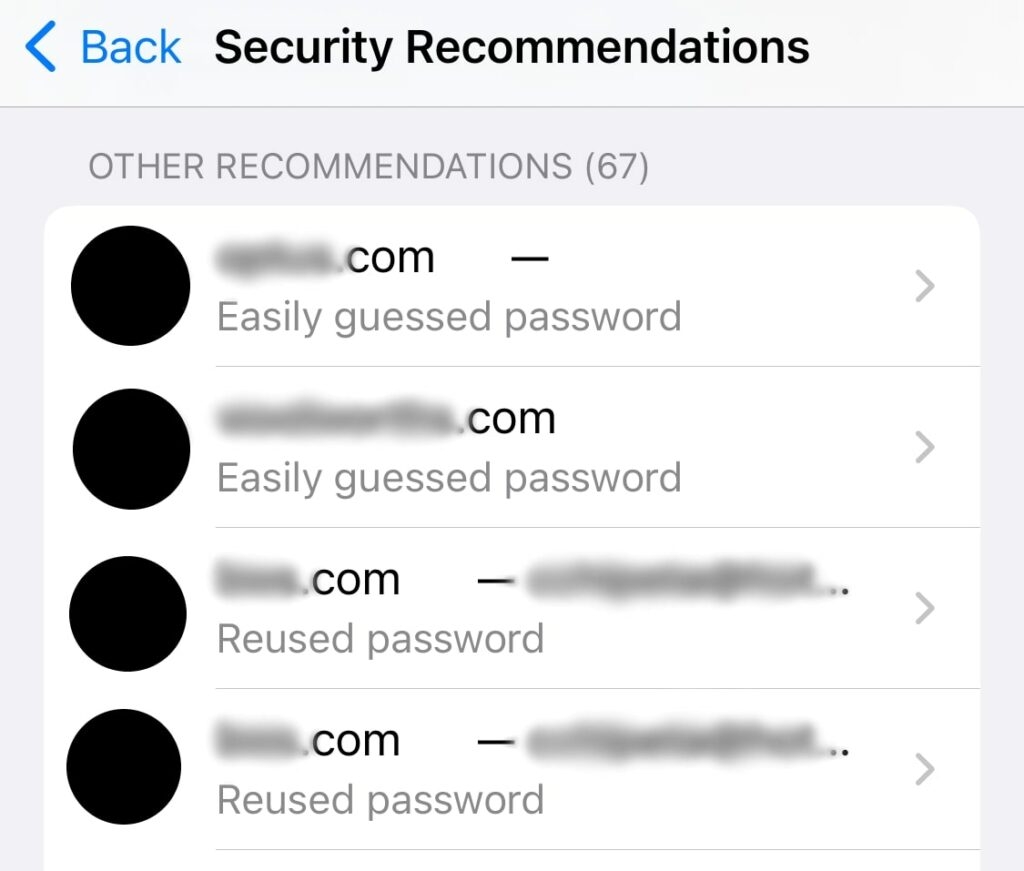As a cybersecurity feature, Apple makes this feature available on iPhones, iPads, and Macs. The Apple forums have been flooded with people asking what they should do about this alarming message. According to this message, your account password has been made public on the web space, compromising your account access. You might wonder what this message means and what action you should take if you have received it. To learn more, keep reading.
Apple’s Data Security Recommendations: What is it?
Using Apple’s “Security Recommendations” feature, users can monitor their passwords and receive warnings if their passwords have been leaked.
How to Connect AirPods To Apple TV?Is Your Apple Mouse Not Working? Here’s How to FixFix: com.apple.mobilephone Error 1035 on iPhone?
Furthermore, it helps you choose and keep secure passwords. When creating a new password, the feature will provide you with a list of recommended passwords that are both strong and secure. To reduce the risk of identity theft and fraud, security recommendations enable users to update their passwords before they become victims of a data breach. Especially in the healthcare sector and financial industry, a data breach can lead to hefty fines and serious legal and reputational risks.
How Does A Data Leak Occur?
Whenever sensitive, confidential, or private information is accidentally exposed, it’s called a data leak. The two ways to expose data are electronically and physically. Electronic data: Such leaks are usually caused by sensitive data leaking onto the Internet, for example, through cloud leaks. Physical data: usually, it occurs when devices, such as hard drives, laptops, and mobile phones, are lost. The access to sensitive data is not dependent on cyber attacks, unlike data breaches. The main cause of data leaks is inadequate security measures or human error. In order to get into an organization’s computer system, cybercriminals actively search for data leaks. If exposed data is not corrected immediately, data breaches will likely occur. Once sensitive data is located, cybercriminals can use it in several ways as an organization’s systems are attacked as part of a larger cyberattack, like data exfiltration. Furthermore, social engineering scams, ransomware attacks, and identity thieves can sell personally identifiable information (PII) on dark websites.
What’s The Reason For This Message?
A Security Recommendations feature on iCloud Keychain automatically monitors users saved passwords for data leaks. It checks your credentials against recognized databases of leaked passwords, similar to haveibeenpwned.com. The feature alerts you when your password is exposed through an account you have saved. If you log in to any affected accounts next time, you’ll receive a notification asking you to change your password or ignore it (not recommended). There will allow you to either change your password on the website or dismiss the alert by selecting “Not now.” The best thing you can do is change your password immediately to prevent further security breaches. You can check the overall health of your saved passwords at any time using the in-built Security Recommendations feature.
Tips For Using Apple Security Recommendations
This information will be matched against the leaked password list and cross-referenced to produce a list of pwned accounts, including yours. Imagine there are no messages on your account, congrats! You are safe with your passwords, or this feature isn’t enabled for you. To turn this feature on, go to Settings > Passwords > Security Recommendations > Detect Compromised Passwords. And turn on the toggle here. You may see a number of warning messages. However, what is most concerning is the statement that states, “This password appeared in a data leak.”. If you tap on each alert, you can find out which sites are exposed to your passwords. A list of High Priority password security issues will be displayed, along with one of three alerts: A data leak is the first step to a data breach. If you receive this alert, you should follow the prompts – your sensitive data is in danger. If a data leak occurs, reusing passwords can result in a domino effect, leaving all accounts using this password vulnerable. It is becoming increasingly difficult for cybercriminals to hack computers. A weak password is easier to crack, and hackers can easily gain unauthorized access to your account.
Data Leaks: How to Protect Yourself?
Don’t Rely On Password Managers
Most users use password managers to manage their credentials efficiently without memorizing countless unique passwords. Password management functions are available in all major browsers, including Safari, Chrome, and Firefox. In addition to 1Password and LastPass, many third-party password management solutions exist. With the help of strong encryption algorithms and techniques, including hashing, they are able to store a single master password. It’s important to remember that, even though third-party providers use strong cybersecurity methods to protect your personal information, they are still at risk. LastPass, for instance, was breached by hackers in 2015. Even though master passwords were secure, other sensitive data was exposed, including:
User email addressesPassword remindersAuthentication hashesServer per user salts
Update Your Software
In every update of a software program, the programmers try to add new security protocols to the software so that hackers are unable to get through the system as easily. You should, therefore, always keep your software programs up-to-date.
Enable Two-Factor Authentication
Two-factor authentication (2FA) is an extra layer of security that is becoming increasingly common. With 2FA, you need two different pieces of information to log in to an account. For example, you might need your password and a code that is sent to your mobile phone. This makes it much harder for hackers to gain access to your accounts, as they would need to have both your password and your phone.
Keep Your Passwords Up-To-Date
Even if you have the best password in the world, it is important to change your password regularly. This is because hackers are constantly finding new ways to break into systems, and so your old password may no longer be secure. Regularly changing your passwords makes it almost impossible for cybercriminals to hack your account. It is a good idea to change your passwords every three months.
Delete Inactive Accounts
Inactive and old accounts are the most common victims of password breaches. As they are easy targets for hackers, they can pose a security risk. If you have any accounts that you no longer use, it is best to delete them. This way, you reduce the number of potential targets for hackers, and you also protect your personal information.
Create Unique And Strong Passwords
Your accounts are vulnerable to attack if you use weak passwords. Hackers use a credential-guessing technique to access sensitive data. A leak of data could expose one password, and then all accounts using that password would be vulnerable as well. You will have to spend time creating new passwords for every account, but a hacker who gains access to your credit card information will cost you money.
Is Apple Data Leak Real?
Yes, Apple data leaks are real. We’ve already discussed how the iCloud Keychain monitors your password activity and searches online for potential threats involving your password. It is credible to receive these messages. If you want to check if your email address has been compromised, visit https://haveibeenpwned.com/. If that is the case, this website will also provide further details.
Conclusion
We hope this article helped you understand “This Password Appeared In A Data Leak”. You don’t have to panic when you get the message. It does not mean your account is at risk or your personal data has been exposed. It just means that the data leak found a password like yours in the leak. Let me know if you have any questions in the comments section. Thank you for reading!




